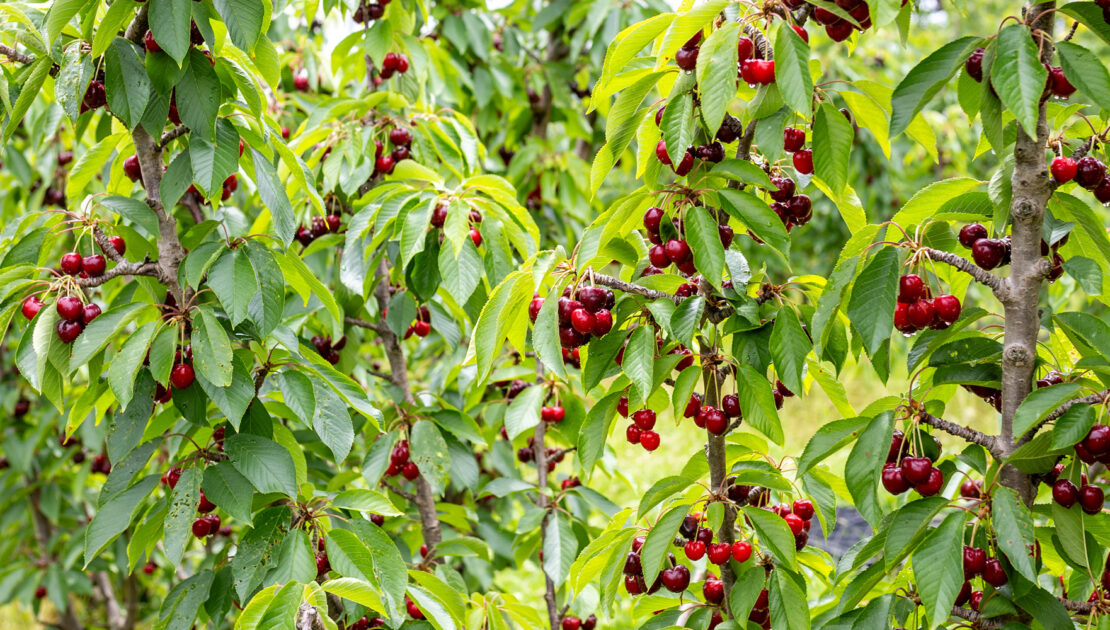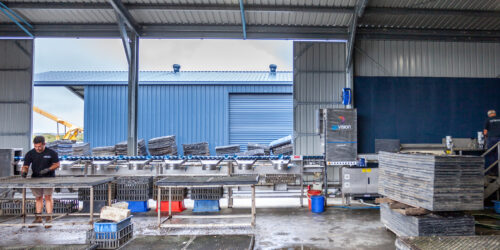We’re proud to partner with so many exceptional agricultural businesses, enhancing the overall productivity and excellence of the fresh produce industry globally.
- 4 March 2024
- gpgraders
- No Comments

Cherry Growers Australia – State Round Ups – 2023-24 Season
Cherry Growers Australia recently released the following report to summarise this year’s cherry season across Australia and have graciously allowed us to share it with our audience. Out thanks is extended to each of the contributors.
NEW SOUTH WALES – JESSICA FEARNLEY AND KEVIN DODDS (NSW DPI)
This season was very much a mixed bag in weather conditions across NSW. Since November, various rain events, heat waves and hail storms created challenging environments for harvest. Growers in Young and Mudgee region who had early season fruit were able to capitalise on a low supplied market early, avoiding the rain that occurred early November, which caused splitting in early season varieties in Orange and Bilpin. Despite a forecast of dry weather in December and January, both the major growing regions of Young and Orange received significant rainfall during this period, with warm conditions creating unfavourable rot periods. Although these storms were challenging for preventing splits in fruit, most growers got a reasonable amount of fruit off before Christmas.
In Batlow, storms before and after Christmas caused some splitting with Lapins and Sweet Georgia the worst affected. According to local growers, the varieties Claudia and Regina held-up best against the rain events. The size and eating quality of the undamaged fruit was good and growers reported strong sales through farm gate outlets and at local farmers markets during the Christmas / New Year holiday period. Most of NSW’s harvest wrapped up in early January, with some growers still wrapping up at the end of the second week of January.
SOUTH AUSTRALIA – DARREN GRAETZ (SARDI)
This season in SA was extremely challenging for growers, with early season indications being promising, but with significant rainfall events in the back half of the season creating disappointment. What growers were able to harvest was dependant heavily on variety timing, with earlier varieties coming off before the Christmas rain.
A summary of the varieties before and after include Lapin blocks packing out at 40% pre-Christmas and only 8% after. At Ashton (mid Adelaide Hills) 50% of the total crop was harvested with around 50% pack out on average and at Lobethal (back of Adelaide Hills) 90% of the total crop was harvested but only 40% pack out average. The challenge for growers was making the rational economic decision to discontinue harvest in certain varieties or in some cases to not start harvest at all.
Some positive notes for the season were there are several reports of very good experiences with the new optical GP graders, and bird pressure was down over the season probably due to extensive native flowering and grass growth in a very mild wet season.
VICTORIA – ALISON JONES (VIC CHERRIES)
The timing of the season this year was an earlier start than the last few years in most regions throughout Victoria. On average approx. 7-10 days.
The crop load was forecast to be high however this was scaled back to being approximately 80% generally across the state. There were some late flowering varieties.
Fruit quality was varied depending on the weather conditions. Generally, what was harvested was pleasing regarding firmness and flavour. Packouts were affected in Yarck, Strathbogie, The Yarra Valley, and Tolmie who suffered badly with rain damage.
Western Flower thrip seemed to be an issue in multiple areas, (limited chemical control options that the Industry could investigate). There was no extended dry spell associated with El Nino and in the southern areas the temperature is only starting to get to summer expectations.
The market feedback post Christmas was that there was strong demand and a great opportunity if you had cherries. Supply was rather limited due to rain events and an earlier season. Good demand all the way through in export markets, and a definite increase on the previous year.
In summary the fruit quality for the most part was good. The lead up to Christmas is a great time to have cherries as demand is high. Export is increasing and needs to be a key focus for industry to alleviate oversupply with the potential planted production coming on.
A mixed result depending on timing and location. Cherry growing is not for the faint hearted!
TASMANIA – SHANNELLE PERCY – (FRUIT GROWERS TASMANIA)
Most of Tasmania’s cherry growers have been happy with the overall quality this season so far, and growers are once again pleased to be able to supply big, excellent quality cherries to markets across Australia and southeast Asia.
With Lunar New Year just around the corner and the harvest and export season now in full swing, demand for Tasmanian cherries continues to be high. Fruit volume and quality has been excellent in the lead up to harvest, with good crop loads and high fruit size reported across most varieties.
Growers are making the most of the season, working around the clock to bring in, sort and package the harvest. Supporting them are large numbers of seasonal workers who travel to Tasmania just to work as pickers, packers and harvest support crews. Many of these are working holiday makers, many of whom are eager to undertake agricultural work as part of making sure they qualify for the 2nd year visa. Others are international students, making the most of the summer break to build savings ahead of the teaching semester. The return of these groups to pre-COVID numbers has been greatly welcomed by growers, allowing harvest teams to operate productively and efficiently throughout the season.
Republished from CGA Monthly Newsletter (January 2024) with permission from Cherry Growers Australia.



